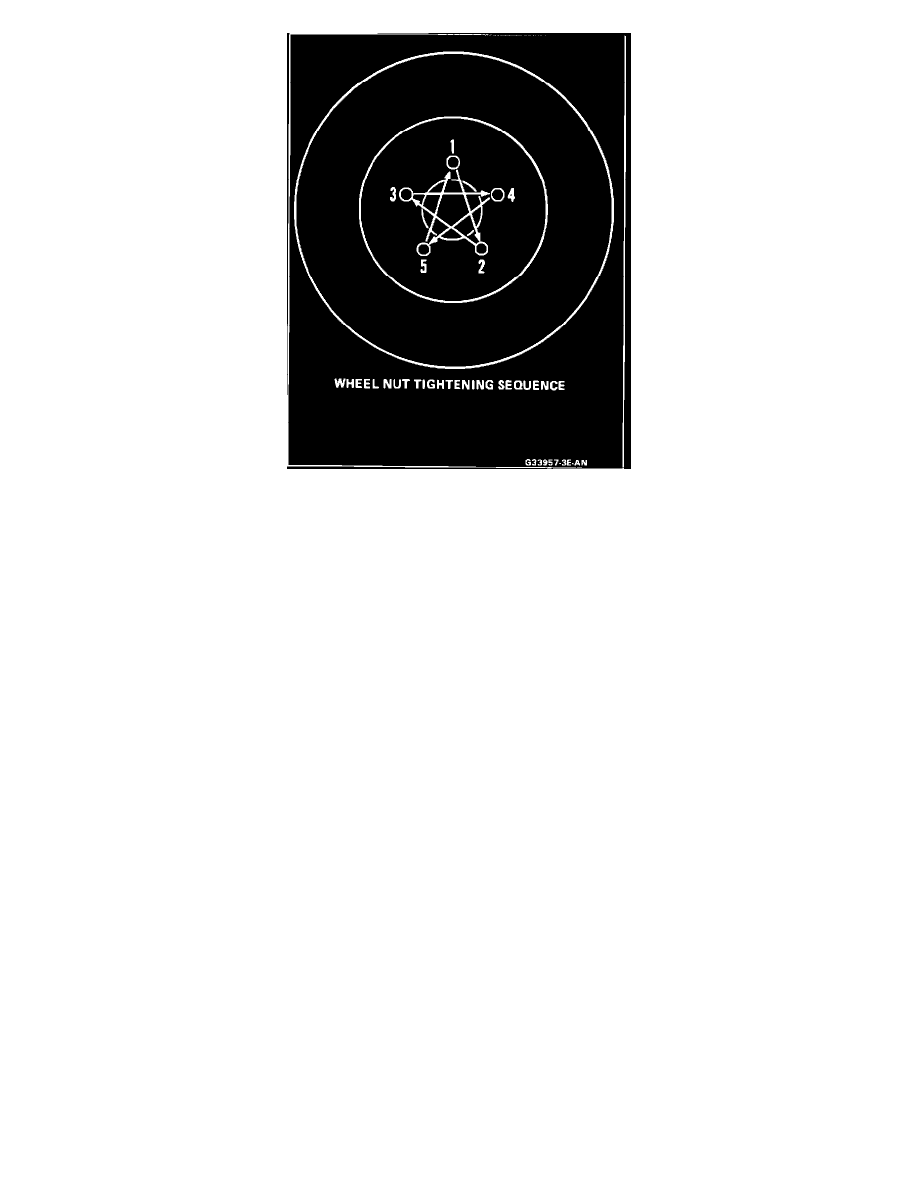Seville V8-273 4.5L (1989)

FIGURE 1 - HOLE WHEEL NUT TIGHTENING SEQUENCE
Lateral Run out Check:
A lateral run out check is an integral part of the on-car refinishing procedure. If off-vehicle rotor refinishing is used, the following lateral run out check
should be performed:
1.
Remove wheel, invert wheel nuts, and reinstall them on the studs. Tighten nuts to 20 ft.lbs. following the tightening sequence shown in Figure 1.
2.
Fasten a dial indicator to the caliper so that the indicator button contacts the rotor approximately 13 mm (0.500") from the outer edge.
3.
Zero the dial indicator needle.
4.
Rotate the rotor one complete revolution while observing run out indicated on the dial. Total Indicated Run out (TIR) should not exceed 0.08 mm
(0.003").
On front-wheel-drive vehicles, lateral rotor run out due to stacked tolerances can often be reduced by rotating (indexing) the rotor one or two bolt
holes in relation to the hub. If excessive run out cannot be corrected by indexing the rotor, check the hub and bearing assembly for looseness.
NOTICE:
Whenever the brake rotor has been separated from the wheel bearing flange, clean any rust or foreign material from the mating
surfaces of the wheel bearing flange and rotor. Failure to do this may result in increased lateral run out of the rotor and brake
pulsation.
5.
If lateral rotor run out exceeds the amount specified in step 4, refinish the rotor on the vehicle.
Rotor Thickness Variation Check:
Variations in rotor thickness can be checked by measuring the thickness of the rotor at four or more points around the surface of the rotor. Use a
micrometer calibrated in one-tenth increments per .001". All measuring points must be the same distance in from the edge of the rotor.
A rotor that varies in thickness by more than 0.013 mm (0.0005") can cause pedal pulsation and/or front-end vibration during brake applications. Rotors
with 0.013 mm or higher thickness variations should be refinished or replaced as necessary.
